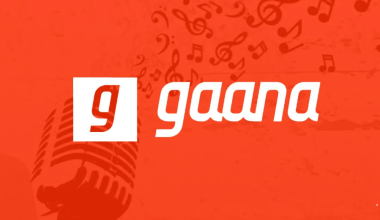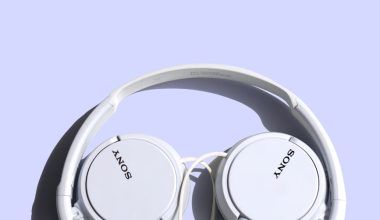Audio formats are the backbone of digital sound. Whether you’re listening to music, podcasts, or audiobooks, the file format matters. Each audio format serves a purpose—some prioritize quality, while others focus on compatibility or storage efficiency. This audio formats list will guide you through the most popular types, their features, and their ideal uses.
What Are Audio Formats?
Audio formats define how sound data is stored and played. They decide the file size, audio quality, and compatibility with devices. Broadly, audio formats fall into two categories:
- Lossy Formats: Compress data by removing some sound details to save space.
- Lossless Formats: Retain all audio data, offering the best quality.
Understanding these categories helps in choosing the right format for your needs. Let’s explore a detailed audio formats list to simplify your decision-making.
Popular Audio Formats List
1. MP3 (MPEG Audio Layer III)
MP3 is the most widely used audio format. It compresses audio to save space but maintains reasonable sound quality.
Key Features:
- Universal compatibility with almost all devices.
- Small file sizes.
- Lossy compression.
Best For:
- Everyday listening on portable devices.
- Sharing music or audio online.
2. WAV (Waveform Audio File)
WAV is an uncompressed audio format that retains the highest quality possible. It’s commonly used in professional settings.
Key Features:
- High audio fidelity.
- Large file sizes due to no compression.
- Compatible with most software and hardware.
Best For:
- Audio editing and production.
- Professional-grade recordings.
3. FLAC (Free Lossless Audio Codec)
FLAC compresses audio without losing any quality. It’s a favorite among audiophiles and those who value high-quality sound.
Key Features:
- Lossless compression.
- Smaller file sizes compared to WAV.
- Support for metadata like album art and lyrics.
Best For:
- Music archiving.
- High-fidelity audio playback.
4. AAC (Advanced Audio Codec)
AAC offers better sound quality than MP3 at similar bitrates. It’s commonly used in streaming and online platforms.
Key Features:
- Lossy compression.
- Widely supported on modern devices.
- Smaller files with decent quality.
Best For:
- Streaming music and podcasts.
- Apple devices like iPhones and iPads.
5. OGG (Ogg Vorbis)
OGG is an open-source format often used in gaming and streaming. It offers high sound quality at smaller file sizes.
Key Features:
- Open-source and free.
- Lossy compression with good quality.
- Limited device compatibility.
Best For:
- Gaming audio.
- Streaming music on platforms like Spotify.
6. ALAC (Apple Lossless Audio Codec)
ALAC is Apple’s version of a lossless format, offering high-quality sound for users in the Apple ecosystem.
Key Features:
- Lossless compression.
- Smaller files than WAV but larger than MP3.
- Native support on Apple devices.
Best For:
- Apple Music users.
- Audiophiles using iOS or macOS devices.
7. WMA (Windows Media Audio)
WMA was developed by Microsoft and is often used on Windows-based systems.
Key Features:
- Lossy or lossless options available.
- Optimized for Windows platforms.
- Limited compatibility outside Microsoft devices.
Best For:
- Windows users.
- Audio streaming on Microsoft-based systems.
8. AIFF (Audio Interchange File Format)
AIFF is Apple’s uncompressed format, offering studio-grade sound quality.
Key Features:
- Uncompressed audio.
- Large file sizes.
- Native support on Apple devices.
Best For:
- Professional audio production.
- Users within the Apple ecosystem.
9. DSD (Direct Stream Digital)
DSD is used for high-resolution audio, often in Super Audio CDs (SACDs).
Key Features:
- Extremely high-quality sound.
- Large file sizes.
- Limited device compatibility.
Best For:
- Audiophiles and high-resolution audio enthusiasts.
Audio Formats for Specific Uses
Here’s a quick guide to selecting the right format based on your needs:
| Purpose | Recommended Format |
|---|---|
| Casual listening | MP3, AAC |
| Professional recording | WAV, AIFF |
| Archiving music | FLAC, ALAC |
| Gaming audio | OGG |
| High-resolution audio | DSD |
Factors to Consider When Choosing an Audio Format
- Quality: Lossless formats like FLAC or WAV are ideal for audiophiles.
- File Size: Choose MP3 or AAC if storage space is limited.
- Compatibility: Ensure the format works with your devices.
- Use Case: Select based on whether you’re streaming, editing, or archiving.
Final Thoughts on the Audio Formats List
This detailed audio formats list highlights the strengths and weaknesses of each type. Your choice depends on your needs. For casual listening, MP3 or AAC works best. For professionals, WAV and AIFF are ideal. If you’re an audiophile, FLAC or DSD is perfect.
Experiment with different formats to see which one fits your lifestyle. By understanding this audio formats list, you can make better decisions and enjoy a superior audio experience.
Related Articles:
For further reading, explore these related articles:
- Which Audio Format Is Best? Choose the Right Format for You
- Digital Music Formats Explained: Ultimate Guide to Your Music
- Music File Formats Explained – Best Guide for Audio Files
For additional resources on music marketing and distribution, visit Deliver My Tune.






